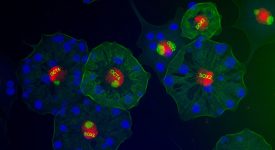
5 Ways Stem Cell Breakthroughs Offer New Hope for Dupuytren’s Patients
5 Ways Stem Cell Breakthroughs Offer New Hope for Dupuytren’s Patients
Article 42 – Platelet-Rich Plasma (PRP) and Growth Factor Therapies for Dupuytren’s
Article 3 – What Is Dupuytren’s Contracture? Understanding Causes & Early Signs
Article 92 – Mitochondrial Health & Cellular Energy in Dupuytren’s Healing
Harnessing Stem Cell Breakthroughs to Interrupt the Fibrotic Cascade in Dupuytren’s
Dupuytren’s Contracture remains one of medicine’s most persistent fibrotic disorders. Despite advances in surgery, enzyme injections, and therapy, recurrence is common. Traditional treatments often remove or weaken cords but cannot correct the underlying biological miscommunication that causes fibroblasts—the body’s repair cells—to remain stuck in overdrive.
That’s why researchers are turning their attention to regenerative medicine and stem-cell science, aiming not merely to cut or dissolve tissue, but to retrain it. Stem cells may one day hold the key to switching off chronic fibrosis at its source.
What Stem Cell Research Reveals About Dupuytren’s Disease
A 2020 study published in Experimental Cell Research explored how mesenchymal stem cells (MSCs) interact with fibrotic tissue. In controlled laboratory settings, these versatile cells—derived from bone marrow, adipose (fat), and umbilical-cord tissue—secreted anti-inflammatory and anti-fibrotic molecules. The MSCs appeared to calm overactive fibroblasts, lower excessive collagen type III production, and release exosomes carrying regenerative signals.
Although the findings were pre-clinical, they supported the idea that MSCs can rebalance immune and repair pathways involved in Dupuytren’s-like fibrosis. The research team proposed that MSC-based therapies might, in the future, serve as a biological brake on disease progression.
(Summary adapted under fair-use from Experimental Cell Research 2020; 394 (1): 112061.)
Why Stem Cell Breakthroughs Are Different from Traditional Treatments
Unlike drugs that target a single pathway, stem cells act as cellular “conductors.” They sense areas of injury or inflammation and release growth factors that promote balance. Rather than simply dissolving a cord, MSCs could theoretically re-educate local fibroblasts to behave normally—encouraging healthy collagen and preventing scar-like regrowth.
Equally promising, their paracrine effect (cell-to-cell signaling) means that even without becoming new tissue, stem cells can influence healing from a distance. This has been demonstrated in models of liver, lung, and skin fibrosis, all of which share pathways with Dupuytren’s disease.
Stem Cell Treatment Challenges and Safety Cautions
Despite the excitement, there is no FDA-approved stem-cell treatment for Dupuytren’s. Every approach remains experimental. Scientists must determine the safest delivery route—whether local injection, intravenous infusion, or post-surgical application—as well as ideal dosage, timing, and long-term effects.
Patients should be wary of unregulated “stem-cell clinics” that advertise cures without clinical-trial oversight. Genuine research is conducted through accredited universities or hospital-based studies listed on clinicaltrials.gov or similar registries.
Ethical oversight is equally important. Stem-cell therapy raises questions about donor sourcing, immune compatibility, and cost accessibility. Progress must move carefully to ensure both safety and fairness.
The Road Ahead: Future of Stem Cell Therapy for Dupuytren’s
If stem cells can retrain fibroblasts and restore normal tissue behavior, the implications extend far beyond the hand. Similar pathways operate in Ledderhose disease, Peyronie’s disease, frozen shoulder, and systemic fibrosis. Researchers envision a future where regenerative therapy complements surgery or enzyme injections—reducing recurrence and accelerating recovery.
For now, patients can follow this field by tracking updates from trusted academic centers in regenerative medicine, such as the Mayo Clinic, Stanford University, and clinical-trial databases. These organizations often recruit volunteers for early-phase safety studies.
Legal & Medical Disclaimer
This content is for educational purposes only and not a substitute for medical advice. Always consult a licensed clinician regarding diagnosis or treatment. Dupuytren’s Solutions is an educational platform intended to complement—not replace—professional care, and individual results may vary.
Call to Action
Join our Dupuytren’s community for updates on stem-cell and regenerative research:
facebook.com/groups/dupuytrenssolutionsandhealth
Explore emerging therapies and patient resources at dupuytrenssolutions.com.
Coming December 2025: The Patient’s Guide for Dupuytren’s Solutions — Your Comprehensive Roadmap from Conventional to Cell-Based Healing.
Attribution
Adapted summary of findings from Experimental Cell Research (2020; 394 (1): 112061) under fair-use for educational commentary. All explanatory text © 2025 Dupuytren’s Solutions.
Experimental Cell Research. 2020; 394(1):112061. https://www.ncbi.nlm.nih.gov/pmc/articles/
(Non-CC-BY Excerpt Only)





